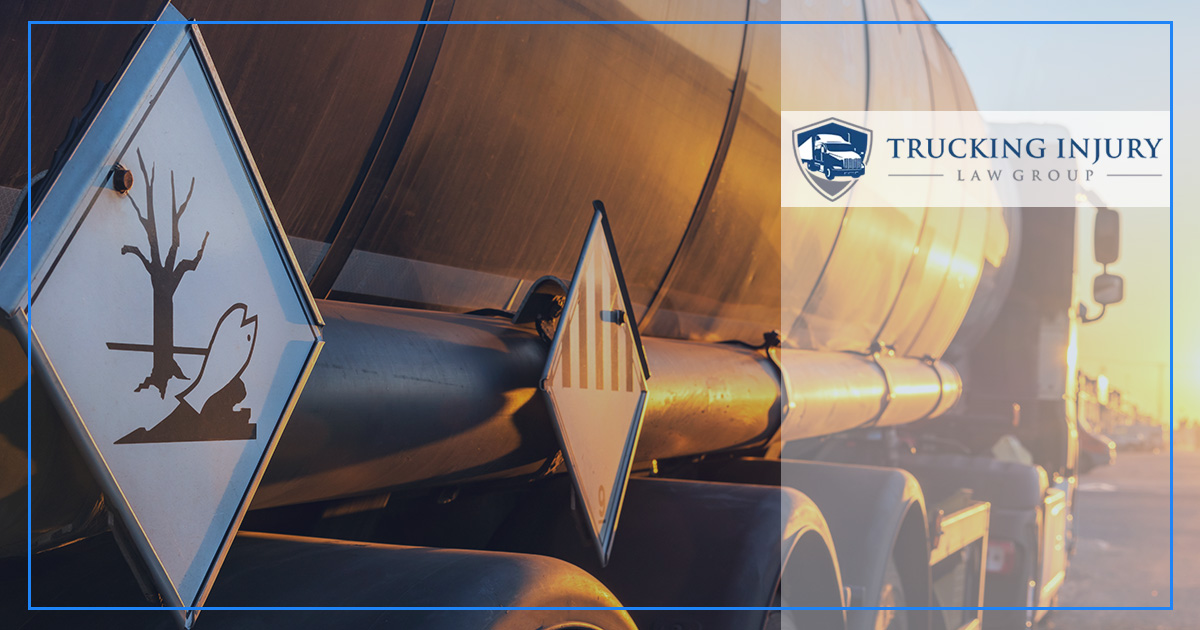What You Need to Know About Hazmat and Hazardous Material Transport
Last year, a tractor-trailer flipped over on a Massachusetts highway, spilling over 10,000 gallons of gasoline, making it one of Massachusetts’s costliest hazardous materials spills in the last decade.
That incident sparked an investigation from CBS News that contained alarming statistics, including that “over the last 10 years, the number of big rig accidents involving hazardous materials has jumped two and a half times, an increase of 155%.”
Since there are over two million hazmat shipments daily in the U.S., drivers need to know about hazmat and hazardous material transport with which they share the roads.
Hazardous Materials Classification
At least six federal agencies detail how truckers must operate when transporting hazmat, a.k.a. hazardous materials. Those regulations begin with classifying the specific type of material that is being shipped.
If you get involved in an accident with a truck that transports hazardous material, you must first identify the type of material that truck was carrying.
The Federal Motor Carrier Safety Administration has created a list of the following nine classes of hazardous materials:
- Class 1: Explosives: These materials explode, burn rapidly, or produce toxic fumes. Examples include dynamite, fireworks, ammunition, pyrotechnics, and ammonium nitrate.
- Class 2: Gases: This category includes any type of compressed, liquefied, or dissolved gases that could trigger hazardous conditions if released. Examples include propane, butane, chlorine, ammonia, nitrogen, oxygen, and carbon dioxide.
- Class 3: Flammable liquids: Any liquid that catches fire quickly and continues to burn. Examples include gasoline, diesel fuel, ethanol, paint thinners, lacquer, and adhesives.
- Class 4: Flammable solids: Just as with flammable liquids, the solids in this class can catch fire and continue to burn. Examples include matches, self-heating cans containing food, lithium-ion batteries, sodium and potassium metal.
- Class 5: Oxidizing substances and organic peroxides: These materials trigger the combustion of other materials when released. Examples include ammonium nitrate, calcium hypochlorite, and benzoyl peroxide.
- Class 6: Toxic and infectious substances: All poisons or toxic substances would fit in this category. Examples include pesticides, herbicides, acids, and medical waste.
- Class 7: Radioactive Materials: This would be any material that emits ionizing radiation. Examples include radioactive isotopes, nuclear waste, and naturally occurring radioactive materials.
- Class 8: Corrosives: Any material that corrodes or destroys another element when it comes in contact with it. Examples include sulfuric acid, potassium hydroxide, wet cell batteries, nitric acid, and sodium hydroxide.
- Class 9: Miscellaneous dangerous goods: This group includes all the other materials that don’t fit the above classes. Examples include dry ice, batteries, fire extinguishers, mercury thermometers, and aerosols.
If a truck carries any of these types of materials, it needs a clear warning label and must follow all federal driving and parking rules applicable to tractor-trailers like these.
Hazmat Endorsement
In addition to the federal agencies, each state has its own regulations for hazmat transportation.
The Washington State Department of Licensing spells out the steps a truck driver needs to take to gain a hazardous materials endorsement (HME) through the Transportation Security Administration (TSA). In this situation, an endorsement is permission to operate a truck that carries hazmat materials.
If truck drivers do not maintain a current endorsement status, they could compound their liability if they get involved in any kind of collision.
Here are the steps a truck driver has to complete for the endorsement:
- Apply with TSA
- Get fingerprinted
- Get clearance on your record from the TSA HME completed application
- Complete hazmat training
- Visit a driver licensing office
- Receive your Commercial Driver’s License (CDL) with HME
When a Hazmat Accident Occurs
If you are involved in a collision with a truck carrying hazardous materials, you’ll want to gather as much evidence from the scene as possible and then consult with an attorney who regularly handles truck wrecks like yours.
That evidence can be brought to your consultation with the Trucking Injury Law Group. If we find that your case has merit, we will begin an investigation to see if the trucker driver and the company they work for comply with state and federal regulations.
There will be other factors to consider as we move forward with the process of finding compensation.






